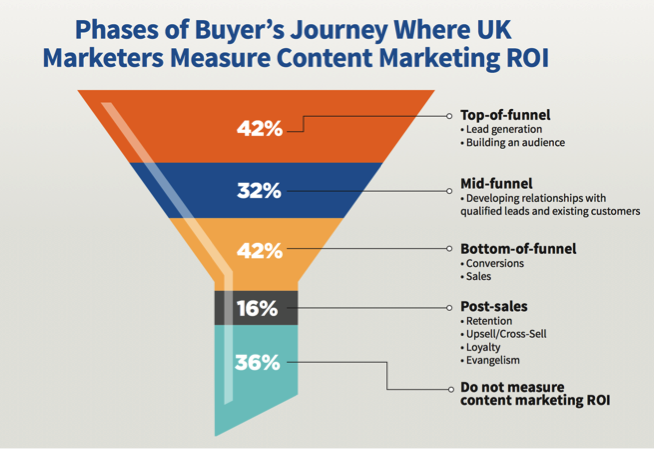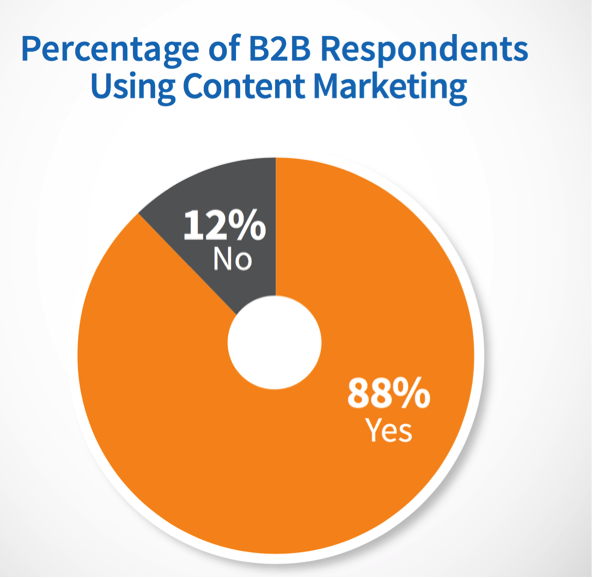Content marketing pre-dates the printing press, but in this age of information overload and endless product pitches, it’s never been as important – or as effective – as now. That said, the question on marketers’ minds as they consider their annual budgets is as old as the printing press: What’s the ROI of content marketing?
At the strategic level, content marketing focuses on creating and distributing valuable, relevant and consistent content to attract and retain well-defined audiences – and to drive them to a specific action. In practice, it means creating and effectively telling a story to illustrate a product or service, but not as intrusive, distracting or irritating advertising.
In other words, as we define it at VitalBriefing, bringing valuable information that helps guide your clients and customers into the decisions they need to make even if it’s not your product or service they eventually buy.
Sound counter-intuitive? It’s not. The point of the content, as Heidi Cohen, author of the Actionable Marketing Guide puts it, is to give customers and prospects “useful information” before, during or after a purchase. The narrative, in turn, should and will drive business if the customers find it truly useful. (A mistake we see marketers often make: placing their product pitch at the center of the content –reinforcing the notion that the source of the content only wants to ‘sell them, not help them.’). If the content is valuable, showing off your thought leadership, they’ll hold you and your service in high esteem.
I love this pre-Internet example (remember those prehistoric days?): In 1982, Hasbro and Marvel teamed up to create a comic book series called “G.I. Joe – A Real American Hero!” with the goal of selling more action toys. As consultant and tech company co-founder Neil Patel points out, seven years later two of every three American boys from ages 5-12 owned at least one G.I. Joe.
Tough to argue with that ROI.
The digital age has brought content marketing to the fore as a marketer’s principal weapon, as savvy professionals increasingly acknowledge. In 2013, a survey of marketers by Adobe and Econsultancy, cited by Emarketer.com, found nearly 40% naming content marketing as a top priority – up 10 points from the year before. As of 2016, the Content Marketing Institute found a full 93% are using content marketing – the “most effective” among them allocating 42% of their budgets to it. This uptick in its use means content marketing will be a $300 billion industry in 2019, more than doubling in value in under four years.
So how do marketers measure the value? Three ways:
– Higher conversion rates
– Lead generation
– Sales
Reviewing available literature and studies, the Content Marketing Institute (CMI) points out that “content marketing ROI is higher than the average marketing ROI in every place” they looked. At the Content Marketing World, Kraft’s former senior director for data, content and media said that content marketing ROI was four times greater than their most targeted advertising.
Think about it and it makes sense.
Source: Content Marketing Institute
With more than 27 million pieces of content shared every day, according to AOL/Nielsen, people are hungry for good content that helps them understand their world, and make solid decisions. In a 2016 Demand Gen content survey of B2B buyers, 95% said they considered content as trustworthy when evaluating a company and its offerings. Similarly, the Content Marketing Institute says that 80% of business decision makers prefer to get company information in a series of articles as opposed to advertisements.
Meanwhile, key performance indicators regarding the efficacy of content marketing are overwhelming:
- YoY growth in unique site traffic is some eight times higher for content marketing leaders compared to followers (source: Aberdeen)
- Costing roughly 60% less than traditional marketing, content marketing also generates about three times as many leads (source: DemandMetric)
- Conversion rates are almost six times higher for content marketing adopters than non-adopters (source: Aberdeen)
These are good metrics to set when thinking about ROI as you craft your content marketing strategy. “Shares” are another one – how often your content is passed along via social media. Time spent on your site is also useful.
Calculators such as this one and other statistical measuring tools track ROI through “increased organic rankings as a direct result of earning a diverse, high-quality link portfolio,” according to SEO consultants Moz. But some experts argue – and I agree with them – that the best ROI metric of all is engagement – how and to what extent your audience is involved with the content you create and promote to them.
Source: Fractl
To develop those metrics, you need to have a clear call-to-action that lets you track the performance. These include conversion, scrolling and comments on the piece.
Effective content marketers by far use blogs, case studies, e-newsletters and articles placed on websites as their preferred formats. Their four favourite distribution channels, unsurprisingly, are LinkedIn, Twitter, Facebook and YouTube.
Once you set the metrics and goals, you can start measuring how well your content is performing. If you get it right, you’ll be able to determine the real ROI on the content, as effective content marketers have mastered.

Source: Content Marketing Institute
In the 2017 U.K. Benchmarks, Budgets and Trends Report, CMI found 65% of marketers could demonstrate how content marketing had increased the number of their leads, 61% could show how it increased audience engagement, 54% could demonstrate increased sales and one-third said it had decreased their cost of customer acquisition.
So…what are you waiting for? Build it into your thinking and your budget. And start measuring the results.



